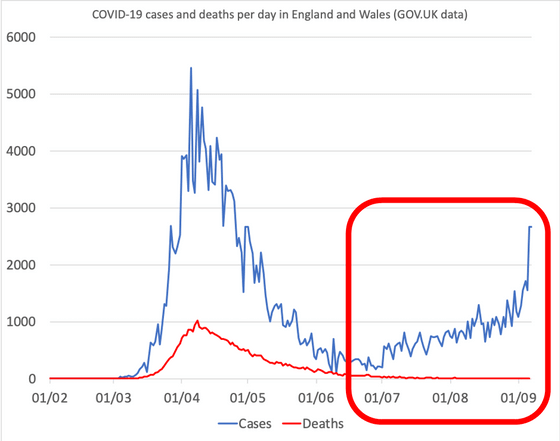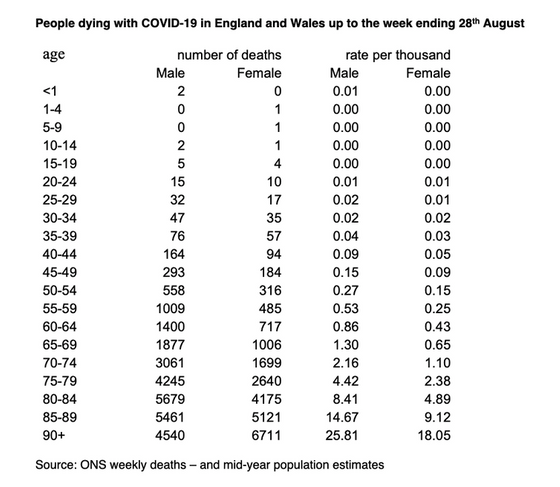Why is the number of deaths not increasing even if the number of cases of new coronavirus infection increases?

In the United Kingdom, the number of people infected with the new coronavirus infection (COVID-19), which had been calming around June 2020, has increased sharply since July 2020, but the number of deaths has been reported to be flat. It has been. Danny Doring, a professor of geography at Oxford University in the United Kingdom, explained why the number of deaths has not increased despite the increase in the number of people infected with COVID-19.
Coronavirus: why aren't death rates rising with case numbers?
Below is a graph of COVID-19 cases and deaths per day, created by Mr. Doring based on announcements by the Governance of England and the Government of Wales. Looking at the part surrounded by the red frame after July 2020, it can be seen that the number of cases per day (blue line) has increased, while the number of deaths per day (red line) has not increased. I will.

'The increase in cases isn't because the number of people with COVID-19 is increasing, but because more tests are being done,' Doring said. 'The death toll has not increased because the actual number of cases per million people tested has not increased,' he said. In other words, while the number of COVID-19-infected persons found by the test is increasing due to the increase in the number of tests, the actual number of infected persons is not increasing, so the number of deaths is not increasing either.
'Since June, the number of people who are positive on the COVID-19 test has been steadily increasing, but the proportion of young people is increasing and the proportion of elderly people is decreasing. It is believed that the mortality rate of people with COVID-19 is much lower than before, 'said the percentage of elderly infected people who are at high risk of dying from COVID-19. He pointed out that the decrease is one of the reasons why the number of deaths has not increased despite the increase in the number of cases.
The following supports Mr. Doring's claim. From left to right, the table shows age, number of deaths per week in England and Wales (by gender), and mortality rate per 1000 (by gender). The older you are, the higher the number of deaths and the higher the mortality rate. It has been shown to be prone.

Early studies of COVID-19 also showed that the case fatality rate increased with increasing age group.
The case fatality rate of the new coronavirus is 2.3%, and 80% or more are mild symptoms, but the case fatality rate varies greatly depending on the age. --GIGAZINE

According to data obtained by Mr. Doring from the Office for National Statistics, the mortality rate of COVID-19 as of the end of August 2020 was 1 in 1000 for men aged 65 and women aged 75, and between the ages of 30 and 34. One in 50,000 and one in 100,000 between the ages of 20 and 24, the younger the age, the lower the mortality rate.
From this, Mr. Doring said, 'There is a concern that young people will transfer COVID-19 to the elderly, but if young people get sick and it is very unlikely that they will develop it in the future, they will be affected by the elderly in the future. The chances of getting COVID-19 are very low, which is one of the reasons why you shouldn't panic as the number of cases increases. '
Related Posts:
in Science, Posted by log1l_ks







